PERFORMANCE STUDY GUIDE
GRADES 6—12 momix

: Alice
The Jay and Susie Gogue Performing Arts Center at Auburn University engages audiences across the university, the state of Alabama and beyond with curated arts experiences that inspire, enlighten and unite.
Our annual K–12 School Performance Series provides opportunities for schoolchildren to enjoy exclusive performances by some of the most talented and accomplished artists from around the world. Prior to each K-12 school performance, teachers receive a learning guide containing details about the performance, artist and company, supplemental information about the art form and its history, and grade-appropriate activities designed to spark conversation and exploration in the classroom.
To learn more about education and community engagement initiatives at the Gogue Center, visit goguecenter.auburn.edu/education
produced and provided by Jay and Susie Gogue Performing Arts Center at Auburn University
910 South College Street
Auburn, Alabama 36849
k–12 school performance series contact Andrea Jarmon, D.M.A.
Education Coordinator
telephone: 334.844.7371
email: gpac_education@auburn.edu
PERFORMANCE STUDY GUIDE
GRADES 6—12

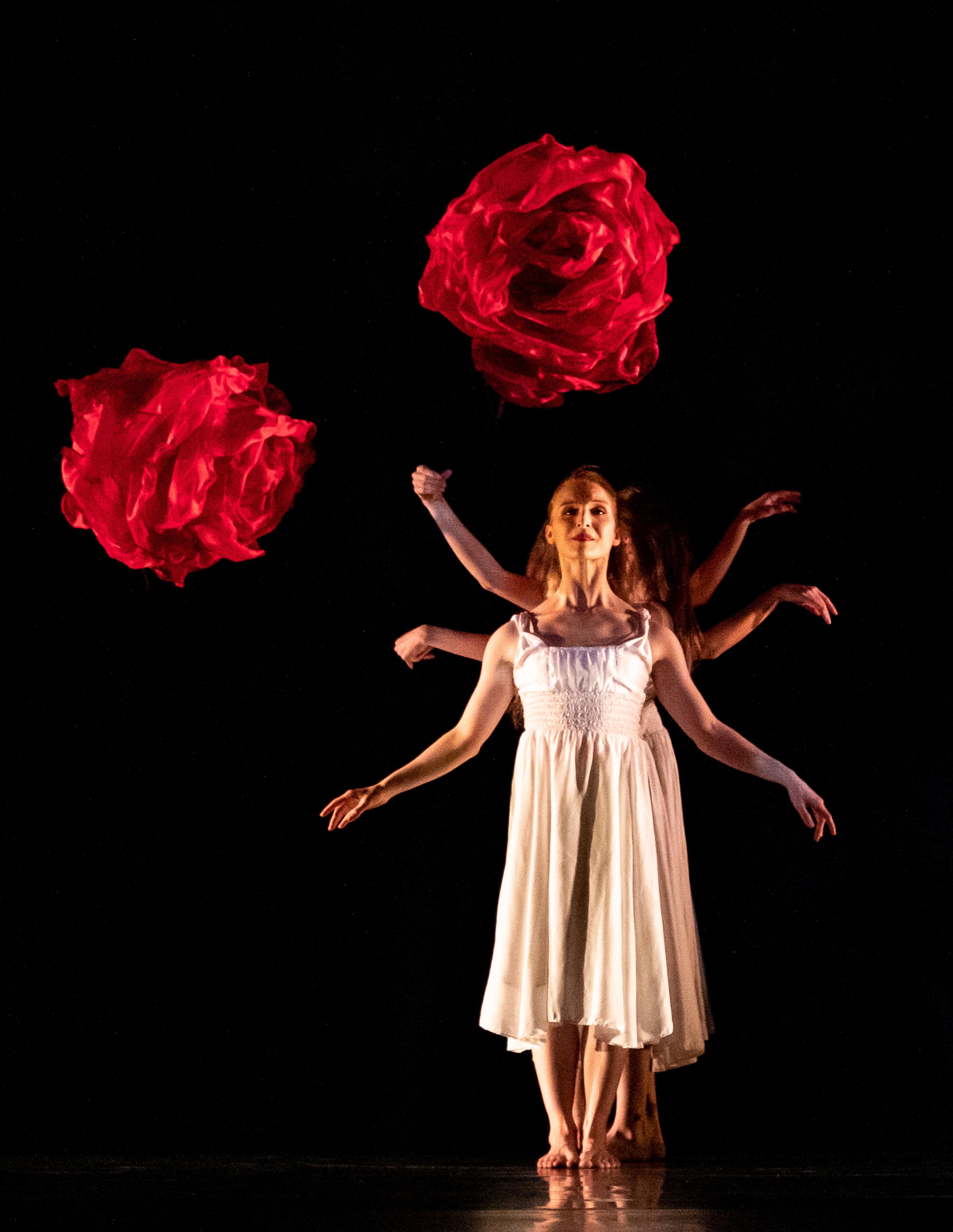
Welcome to Wonderland
This performance study guide is designed to help guide your students through the process of learning about and responding to the art of dance.
In advance of the performance, we recommend preparing your students by reviewing the following:
• Performance description
• Information on MOMIX and the artists associated with the company
• History and overview of Lewis Carroll's books Alice's Adventures in Wonderland and Through the Looking-Glass
• Dance vocabulary
• The five elements of dance
Understanding the relevant background, history, vocabulary, concepts and context will ultimately help your students understand what they are seeing.
After experiencing Alice in person, follow up with class discussions and written assignments to give your students an opportunity to recall, describe and analyze what they have seen and learned.
The activities included are meant to guide your students in conversation, observation and response to the performance. Also included are movement activities created to allow your students to physically explore and experiment with dance.
Activities and questions can be assigned to individual students or groups; however, several questions are included with each activity, so feel free to limit the number of questions assigned to allow for more in-depth discussion.
before the performance
Before your students experience Alice in person, give them a purpose for attending the performance.
Consider providing your students with some of the post-performance activities and key questions in advance of the performance.
First impressions are important. Encourage your students to be prepared to reflect on their immediate responses to the performance.
When it comes to dance, details matter. But with a high-energy, fast-paced performance like Alice, the details can be easily missed. Encourage your students to watch the performance carefully. Remind them that they will be asked to recall several story- and dance-related components of the performance.
Encourage your students to be active rather than passive audience members. Urge them to stay engaged with the performance. Again, remind students they may be tasked with answering several detail-specific questions.

Travel down the rabbit hole MOMIX-style with Moses Pendleton’s newest creation, Alice, inspired by the beloved children's tales Alice's Adventures in Wonderland and Through the Looking-Glass
As Alice’s body grows and shrinks and grows again, MOMIX dancers extend themselves by means of props, ropes and other dancers.
“We don’t intend to retell the whole Alice story,” Pendleton says, “but to use it as a taking-off point for invention. I’m curious to see what will emerge, and I’m getting curiouser and curiouser the more I learn about Lewis Carroll. I share his passion for photography and his proclivity for puns.”
Alice is full of imagery and absurd logic. Before there was Surrealism, there was Alice—an invitation to invent and let the imagination run wild.
Pendleton continues: “You can see why I think Alice is a natural fit for MOMIX and an opportunity for us to extend our reach. We want to take this show into places we haven’t been before in terms of the fusion of dance, lighting, music, costumes and projected imagery.”
As with every MOMIX production, you never quite know what to expect. Audiences will be taken on a journey that is magical, mysterious, fun, eccentric and much more. As Alice falls down the rabbit hole and experiences every kind of transformation, so will your students.
Alice is divided in two acts: Down the Rabbit Hole and Through the Looking-Glass. Below is a list of dances performed in each act.
act one
Down the Rabbit Hole
• A Summer Day
• Alice Down the Rabbit Hole
• Pool of Tears
• A Trip of Rabbits
• The Tweedles
• The Cheshire Cat
• Advice from a Blue Caterpillar
• The Lobster Quadrille
• Mad Hatters
• The Queen of Diamonds
• The Queens of Clubs Versus The Queen of Spades
• The Mad Queen of Hearts
• Cracked Mirror
act two
Through the Looking-Glass
• There is Another Shore
• Into the Woods
• The Wolf-Spied-Her
• Looking Through Stained Glass
• Garden of Molar Bears & Other Creatures
• The Mock Turtle Deflated
• Trial of the Fallen Cards
• Bed of Roses
• Go Ask Alice
For a preview of Alice, visit aub.ie/momix-alice.
ABOUT THE PERFORMANCE
Alice

Forty years of endless innovation
Known internationally for presenting work of exceptional inventiveness and physical beauty, MOMIX is a company of dancer-illusionists under the direction of renowned choreographer Moses Pendleton. With nothing more than light, shadow, props and the human body, MOMIX has astonished audiences with performances across five continents for more than four decades.
In addition to their worldwide stage performances, MOMIX has worked extensively in film and television, recently appearing in national commercial campaigns for Hanes and Target. With performances on PBS’s Dance in America series, France’s Antenne II, and Italian RAI television, the company’s repertory has been broadcast in more than 50 nations. Joining the Montreal Symphony in the Rhombus Media film of Mussorgsky’s Pictures at an Exhibition, winner of an International Emmy for Best Performing Arts Special, the company’s performance was distributed on laser disc by Decca Records. MOMIX was also featured in Imagine, one of the first 3-D IMAX films to be released in IMAX theaters. MOMIX dancers Cynthia Quinn and Karl Baumann, under Pendleton’s direction, played the role of “Bluey” in the feature film FX2. “White Widow,” co-choreographed by Pendleton and Quinn, was featured in Robert Altman’s The Company. MOMIX participated in the Hommage à Picasso exhibition in Paris and was selected to represent the United States at the European Cultural Center at Delphi.
MOMIX has been commissioned by foundations and global corporations to perform and create original works, too. With the support of the Scottsdale Center for the Arts, Pendleton created Bat Habits to celebrate the opening of the San Francisco Giants’ new spring training park in Scottsdale. The group performed at Fiat’s month-long 100th Anniversary Celebration in Torino, Italy, and at Mercedes-Benz’s International Auto Show in Frankfurt, Germany.
To learn more about MOMIX, visit momix.com.

momix
ABOUT THE COMPANY
I continue to be interested in using the human body to investigate non-human worlds ...”
Moses Pendleton Founder and artistic director MOMIX
Meet the artists

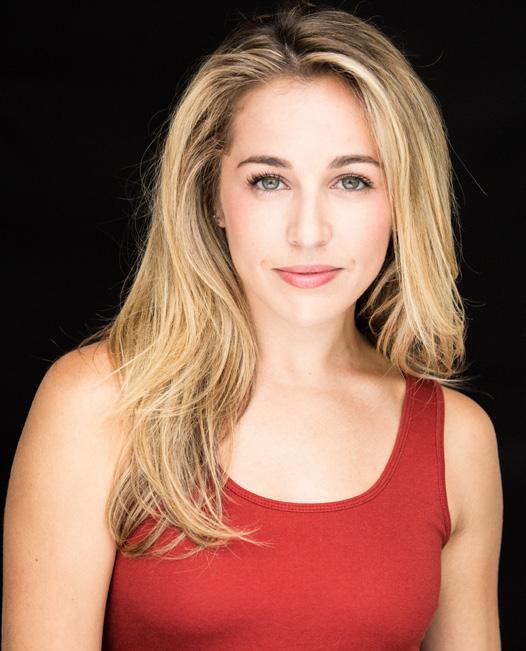

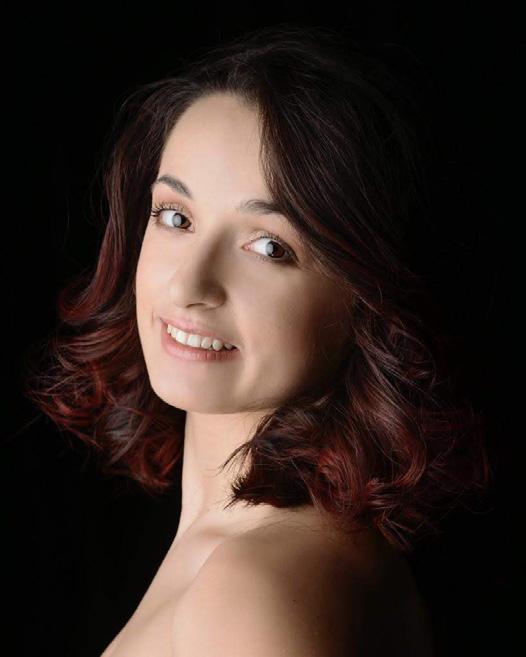





Get to know a few of the talented artists who have brought Alice to life.
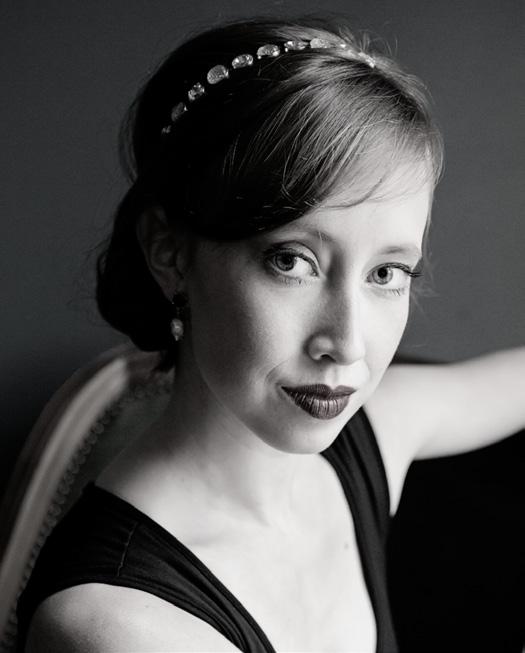
 Moses Pendleton
Derek Elliott Jr.
Sean Langford
Cynthia Quinn
Heather Conn
Nathaniel Davis
Seah Hagan
Aurelie Garcia
Elise Pacicco
Moses Pendleton
Derek Elliott Jr.
Sean Langford
Cynthia Quinn
Heather Conn
Nathaniel Davis
Seah Hagan
Aurelie Garcia
Elise Pacicco
ABOUT THE COMPANY
Jade Primicias Adam Ross
MOSES PENDLETON (Artistic Director) has been one of America’s most innovative and widely performed choreographers and directors for almost 50 years. A cofounder of the groundbreaking Pilobolus Dance Theater in 1971, he formed his own company, MOMIX, with Alison Chase in 1980. Pendleton has also worked extensively in film, television and opera, and as a choreographer for ballet companies and special events.
Pendleton was born and raised on a dairy farm in Northern Vermont. His earliest experiences as a showman came from exhibiting his family’s dairy cows at the Caledonian County Fair. He received a B.A. in English literature from Dartmouth College in 1971. Pilobolus began touring immediately, and the group shot to fame in the 1970s, performing on Broadway under the sponsorship of Pierre Cardin, touring internationally, and appearing in PBS’s Great Performances: Dance in America series.
By the end of the decade, Pendleton had begun to work outside of Pilobolus, performing in and serving as principal choreographer for the Paris Opera’s Intégrale Erik Satie in 1979 and choreographing the closing ceremony of the 1980 Winter Olympics in Lake Placid. In that same year, he created MOMIX, which rapidly established an international reputation for inventive and often illusionistic choreography. The troupe has now been creating new work under his direction and touring worldwide for four decades.
Pendleton has also been active as a performer and choreographer for other companies. He staged Picabia’s Dadaist ballet Relâche for the Paris Opera Ballet and the Joffrey Ballet, and Tutuguri, based on the writings of Artaud, for the Deutsche Oper Berlin. He created the role of the Fool for Yuri Lyubimov’s production of Mussorgsky’s Khovanschina at La Scala, choreographed Rameau’s Platée for the Spoleto Festival USA, and contributed choreography to Lina Wertmuller’s production of Carmen at the Munich State Opera. Pendleton has created new works for the Arizona Ballet and the Aspen Santa Fe Ballet, and he teamed up with Danny Ezralow and David Parsons, both former MOMIX dancers, to choreograph AEROS with the Romanian National Gymnastics Team. Most recently, Pendleton choreographed The Doves of Peace, featuring Diana Vishneva and 50 ballerinas, for the opening ceremony of the 2014 Winter Olympics in Sochi.
Pendleton’s film and television work includes the feature film F/X2 with Cynthia Quinn, Moses Pendleton Presents Moses Pendleton for ABC ARTS cable (winner of a CINE Golden Eagle award), and Pictures at an Exhibition with Charles Dutoit and the Montreal Symphony, which received an International Emmy for Best Performing Arts Special in 1991. Pendleton has also made music videos with Prince, Julian Lennon and Cathy Dennis, among others.
Pendleton is an avid photographer whose work has been presented in Rome, Milan, Florence and Aspen. Images of the sunflower plantings at his home in northwestern Connecticut have been featured in numerous books and articles on gardening. He is the subject of Salto di Gravita by Lisavetta Scarbi (1999), and his photographs accompany the sixteen cantos of Phil Holland’s The Dance Must Follow (2015), which features Pendleton’s own creative process as its subject.
Pendleton was a Guggenheim Fellow in 1977. He was a recipient of the Connecticut Commission on the Arts Governor’s Award in 1998. He received the Positano Choreographic Award in 1999 and the 2002 American Choreography Award for his contributions to choreography for film and television. In 2010, Pendleton received an honorary Doctor of Fine Arts (D.F.A.) degree from the University of the Arts in Philadelphia, where he delivered the commencement address. In 2021, Pendleton received an honorary Doctor of Arts (D.A.) degree from his alma mater, Dartmouth College, for his lifetime contribution to the arts.
CYNTHIA QUINN (Associate Director) grew up in Southern California. She graduated Phi Beta Kappa from the University of California at Riverside and continued there as an associate in dance for five years. As a member of Pilobolus in the 1980s, she performed on Broadway and throughout the United States, Europe, Canada, Israel and Japan, and she collaborated on the choreography of Day Two, Elegy for the Moment, Mirage, What Grows in Huygens Window and Stabat Mater. Quinn began performing with MOMIX in 1983 and has toured worldwide with the company. She has appeared in numerous television programs and music videos, and has assisted Moses Pendleton in the choreography of Pulcinella for the Ballet Nancy in France, Tutuguri for the Deutsche Oper Berlin, Platée for the Spoleto Festival USA, Les Mariés de la Tour Eiffel in New York, AccorDION for the Zurich-Volksbuhne Theatre, Carmen for the Munich State Opera, as well as Opus Cactus for the Arizona Ballet and Noir Blanc for the Aspen Santa Fe Ballet. She has also appeared as a guest artist with the Ballet Théâtre Française de Nancy, the Deutsche Oper Berlin Ballet, and the Munich State Opera, as well as international galas in Italy, France and Japan. Quinn made her film debut as “Bluey” (a role she shared with Karl Baumann) in F/X2. She was a featured performer in the Emmy Award-winning Pictures at an Exhibition with the Montreal Symphony and has also appeared in the 3-D IMAX film Imagine. Quinn is a board member of the Nutmeg Conservatory in Torrington, Connecticut, and is on the advisory board of Torrington’s Susan B. Anthony Project. She was featured with RuPaul and k.d. lang for M.A.C. Cosmetics’ “Fashion Cares” benefit in Toronto and
Vancouver. Quinn is co-choreographer of “White Widow,” which is featured prominently in Robert Altman’s The Company. Quinn was also featured in the film First Born, with Elisabeth Shue. Most recently, she co-choreographed The Doves of Peace, featuring Diana Vishneva, for the opening ceremony of the 2014 Winter Olympics in Sochi. Her most rewarding and challenging role, however, has been as a mother to her daughter, Quinn Elisabeth.
HEATHER CONN (Dancer) is originally from New York. She attended the Long Island High School for the Arts as a dance major and holds a B.F.A. in dance from the Tisch School of the Arts at New York University. Additionally, she has trained with the Joffrey Ballet School, the Bolshoi Ballet and the Boston Conservatory, among others. Conn has performed professionally across the United States and beyond, in contemporary dance, musical theater, film and live production art. She has performed in such notable venues as Radio City Music Hall, the Kennedy Center, the Apollo Theater, Jacob’s Pillow and the Folies Bergere in Paris. Conn has danced for Nickerson-Rossi Dance, Schoen Movement Company and The Orsano Project as assistant to Phil Orsano. She was given a leading role in Busch Gardens Christmastown production of their show Miracles. She performs for TEN31 Productions as a “living art” performer at events, as well as the live arts company Moving On. Conn is featured in the published photography book Dance Across the USA by Jonathan Givens, as a dancer representing the state of New York. She is a certified yoga teacher, a certified Animal Flow® instructor, and an essential oil specialist. Conn has a passion for healing and is an advocate for social justice, wildlife and the Earth. Conn joined MOMIX in 2018.
NATHANIEL DAVIS (Dancer) was born in Toronto, Canada, and started his training at the age of 17. He attended the New World School of the Arts college, graduating cum laude in 2015 with a B.F.A. in dance. He has previously worked with the Peter London Dance Company in Miami, Florida, and Artichoke Dance Company in Brooklyn, New York. He has performed works by Robert Battle, Daniel Ulbricht, George Balanchine, José Limón, Kyle Abraham, Bill T. Jones and Darshan Bueller. Davis joined MOMIX in 2017.
DEREK ELLIOTT JR. (Understudy) is a recent graduate of DeSales University where he graduated with a B.A. in both musical theatre performance and dance. He has had the privilege to train with Trinette Singleton, Julia A. Mayo, TImothy Cowart and Angela Sigley Grossman, and had the opportunity to perform excerpts from Paul Taylor’s Cloven Kingdom restaged by Annmaria Mazzini. More recently, Elliott worked with Luis Villabon as an offstage cover and swing in A Chorus Line at the Pennsylvania Shakespeare Festival. Apart from dancing and acting, Elliott holds a
black belt in traditional karate, Jeet Kune Do and Lee Jun Fan Gung Fu, and has an international certification in Parkour. He loves and thanks his family for their undying support. Elliott joined MOMIX in August 2022.
SEAH HAGAN (Dance Captain) Born and raised in Tallahassee, Florida, Hagan is a third-generation dancer. She began her training at the Southern Academy of Ballet Arts under the tutelage of Natalia Botha and Charles Hagan. At the age of 14 she became an advanced company member with the Pas de Vie Ballet, where she performed many classical and contemporary soloist and principal roles. Along with her ballet and modern training, Hagan is also an experienced ballroom dancer, having competed in multiple world championships. At the age of 16, she graduated summa cum laude from the Florida State University Schools. Hagan also held a part-time position with the State of Florida at the Florida Fish and Wildlife Conservation Commission. On her 18th birthday, she began her professional dance career with the worldrenowned company MOMIX. Hagan has since toured across the United States, Canada and Europe performing featured solos in three original shows, VIVA MOMIX Forever, Opus Cactus and Alice. Hagan was also a member of the creation and premiere of the company's newest production, Alice. Hagan joined MOMIX in 2017.
AURELIE GARCIA (Dancer) is a dancer, dance teacher and choreographer. She grew up in the South of France, where she first started dancing at a local dance school. At the age of 18, she moved to New York City to attend The Ailey School, graduating from their scholarship program in 2018. Garcia has performed works by Ray Mercer, Elizabeth Roxas, Tracy Inman, Jacqulyn Buglisi, Talley Beatty, Anabelle Lopez Ochoa, Eduardo Vilaro, Michelle Manzanalez, Jacqulyn Buglisi, Pedro Ruiz and Alvin Ailey. Since moving to New York to pursue her dance career, she has performed with companies such as the Alvin Ailey American Dance Theater, Ballet Hispanico, Ntrinsik Movement, Bloodline Dance Theater, Ann Nuo Spiritual Dance Art, VLDC, OCA Dance and ACBD. Garcia joined MOMIX in 2019.
SEAN LANGFORD (Dance Captain) is a dance artist residing in Brooklyn, New York. Langford graduated cum laude from Mason Gross School of the Arts in 2016. While at school, he had the privilege of performing the works of Shen Wei, Pam Tanowitz, Niv Sheinfeld, Oren Laor and Camille A. Brown. Professionally, he has worked with Keith Thompson, Alison Chase/Performance, Erick Montes/ Danceable Projects, and Rock Dance Collective. He is a certified pilates teacher and enjoys long walks on the beach, video games and making people laugh. Langford joined MOMIX in 2018.
ELISE PACICCO (Dancer) is from Charlotte, North Carolina, and currently resides in New York City. She graduated magna cum laude from Wake Forest University, where she was a recipient of the Presidential Scholarship and a member of the Phi Beta Kappa honor society. Pacicco earned an M.F.A. in dance performance and choreography from NYU’s Tisch School of the Arts in 2015. She has performed in works of Bill T. Jones, Pilobolus, Paul Taylor, Shannon Gillen, Helen Simoneau and others. From 2015 to 2019, Pacicco was a member of Carolyn Dorfman Dance, where she worked nationally and internationally as a teaching and performance artist. She also dances for Rovaco Dance Company, based in New York, under the direction of Rohan Bhargava. Pacicco is also passionate about teaching yoga and pilates and currently teaches at Y7 Studios throughout New York City. Pacicco joined MOMIX in 2019.
JADE PRIMICIAS (Dancer) leapt into the rabbit hole in 2018, joining MOMIX for the thrilling creation of Alice. In addition to touring with the company, Primicias enjoys teaching dance and English and performs as a guest artist with Pilobolus, Connecticut Theater Dance Company and Tennessee Ballet Theater. As associate creative director of Tennessee Ballet Theater from 2015 to 2018, Primicias collaborated with artistic director Erin Walter to produce site-specific performances retelling Memphis history through dance. Funded by the Jim Wayne Miller and Beverly Veenker foundations, Primicias established an artistic residency in Grantham, England, in 2013. This culminated in a series of performances and researchbased publications on contemporary dance improvisation in the UK and United States. Primicias graduated summa cum laude from the Mahurin Honors College at Western Kentucky University with a dual degree in dance and English after having developed a love for the the arts in small-town Kentucky studios. She has since studied Limón technique and pedagogy under Colin Connor, Debra Noble, Risa Steinberg and Dante Puleio. Primicias joined MOMIX in 2018.
ADAM ROSS (Dancer) began training at a young age in Chesapeake, Virginia. He went on to compete in regional and national dance competitions throughout the East Coast. As a teenager, he attended the Governor’s School for the Arts in Norfolk, Virginia, where he focused on ballet and modern technique. Currently a senior at the Boston Conservatory at Berklee, Ross is pursuing a B.F.A. in contemporary dance performance. He has performed works from Paul Taylor, Erick Hawkins, Martha Graham, Murray Louis and Gabrielle Lamb, as well as multiple creations from faculty, students and alumni from the conservatory. Dance intensives and workshops include Point Park University, Milwaukee
Ballet, RUBBERBANDance Group and CoMotion. Ross is excited to begin his professional career with MOMIX, while simultaneously completing his degree this spring. He joined MOMIX in August 2022.
PHOEBE KATZIN (Costume Designer) graduated from Endicott College’s fashion design program, after which she worked for Kitty Daly, building dance costumes and dressmaking. For several years she lived in New York, making costumes for Kitty Leach, Greg Barnes and Allison Conner, among others. Katzin has been instrumental in designing and constructing costumes for MOMIX and Pilobolus for more than 20 years.
MICHAEL KORSCH (Lighting Designer) is a lighting and scenic designer based in Philadelphia. He has worked with numerous directors and choreographers, creating visual designs for dance and theatre throughout North and South America, Europe, Australia and Asia. Korsch has been the resident lighting/scenic designer and technical director for Complexions Contemporary Ballet since 1998, and the resident lighting designer for Ballet Arizona since 2001. In addition, he has created original designs for companies including Alvin Ailey American Dance Theater, Aspen/Santa Fe Ballet, BalletMet, BalletX, Carolina Ballet, Cleveland Play House, DanceBrazil, Dance Theatre of Harlem, Daytona Contemporary Dance Company, Disney Creative Entertainment, English National Ballet, Hubbard Street Dance Chicago, North Carolina Dance Theatre, Oakland Ballet, Pennsylvania Ballet, Pittsburgh Ballet Theatre, Sacramento Ballet, Staatsballett Berlin and Washington Ballet, and has worked with MOMIX on several shows.
WOODROW F. DICK III (Production Manager & Lighting Supervisor) is MOMIX’s go-to guy for anything and everything production-related. He has worked on numerous productions, both big and small. Dick joined MOMIX in 2005.
VICTORIA MAZZARELLI (Ballet Mistress) has enjoyed an impressive and extensive professional international ballet career. In 2003, she joined the Nutmeg Ballet Conservatory—where she trained for 14 years as a young dancer—in Torrington, Connecticut. She was appointed the conservatory's artistic director in 2011. Mazzarelli continues in this role to date. She also serves as a guest teacher for MOMIX and enjoys performing various engagements as guest artist.
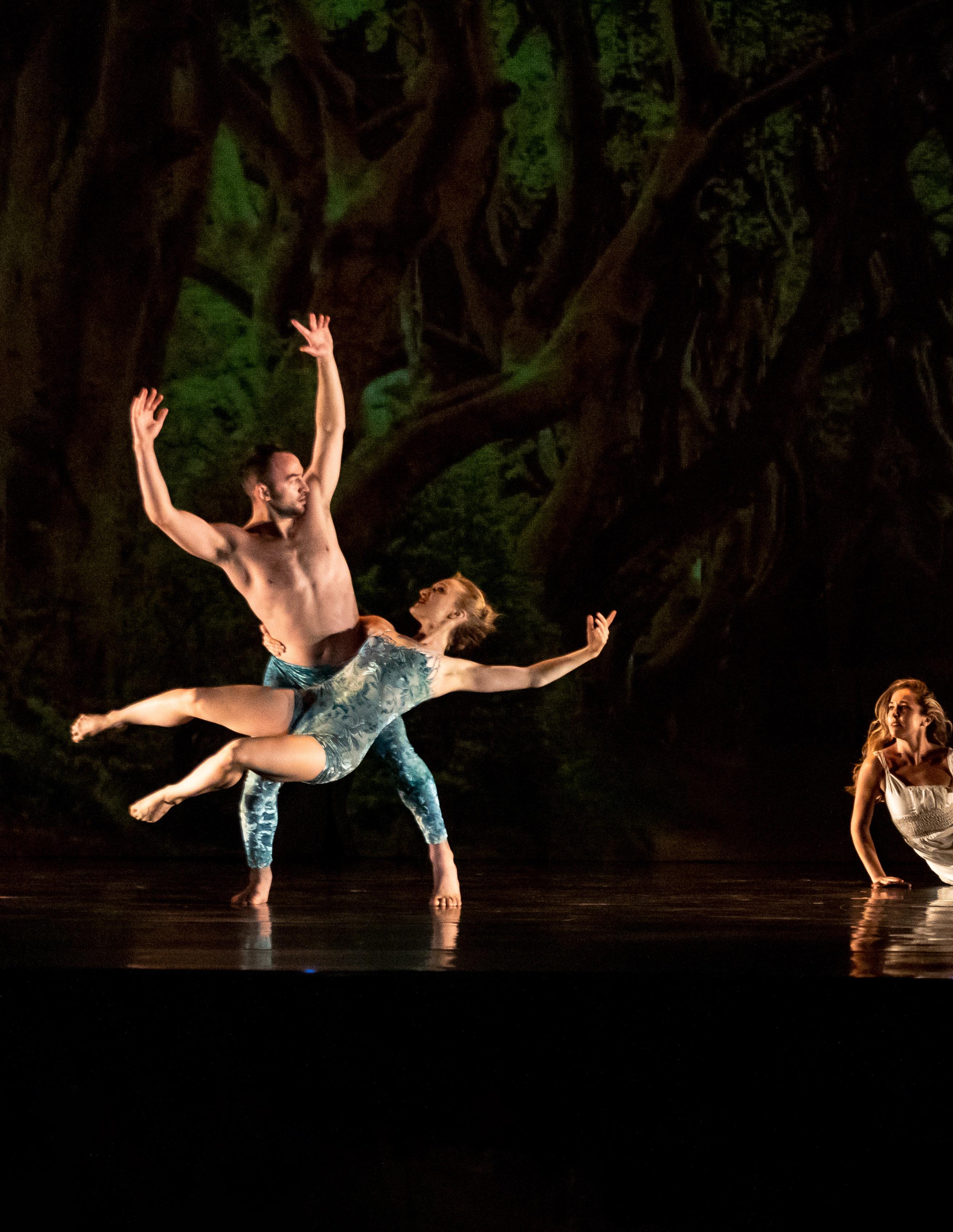

Alice’s Adventures in Wonderland and Through the Looking-Glass
history & background
Lewis Carroll's Alice’s Adventures in Wonderland was published in 1865. It is the story of a young girl named Alice who falls down a rabbit hole and finds herself in a fantastical world full of animal-like creatures and other mystical beings. The character of Alice was based on a real girl that the author knew well, Alice Liddell. It is said that Carroll began telling Alice and her sisters the story of “Alice’s Adventures Under Ground” on an afternoon boat trip in 1862. He began writing the stories down for Alice soon after, but it took Carroll more than two years to complete the novel.
Through the Looking-Glass was published in 1871 as a sequel to Alice’s Adventures in Wonderland. In this story, Alice enters a fantasy world through a mirror. In this new world everything is reversed—the mirror-image, so to speak. Through the Looking-Glass was the first of the stories to become well-known and its popularity led to the appreciation of the original Alice.
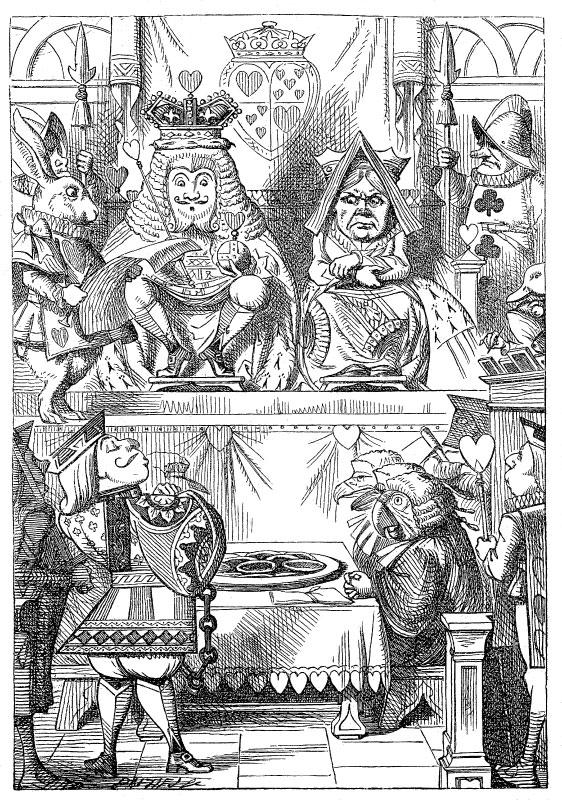
about the author
Lewis Carroll was born Charles Lutwidge Dodgson on January 27, 1832, in England. He was a poet and mathematician as well as an author. As a writer, he was known for his skill with word play, logic and fantasy. He published his literary works under his pseudonym (or pen name), Lewis Carroll. Alice's Adventures in Wonderland and Through the Looking-Glass are the most famous of his published works. His mathematical works were published using his birth name. In addition to writing, Carroll earned a living as an inventor, professional photographer and professor. He was passionate about the art of letter-writing and is said to have written and received nearly 10,000 letters in his life. Carroll died just shy of his 66th birthday on January 14, 1898, from pneumonia.
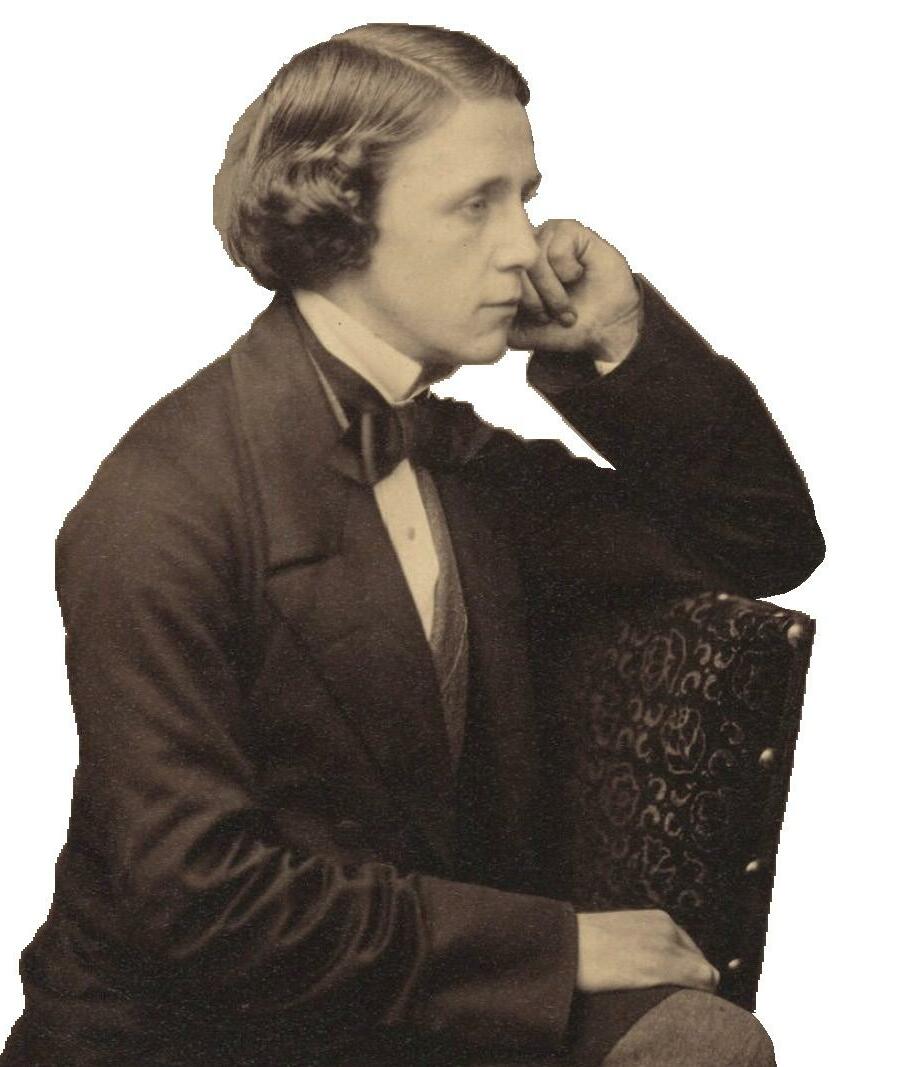
lesson
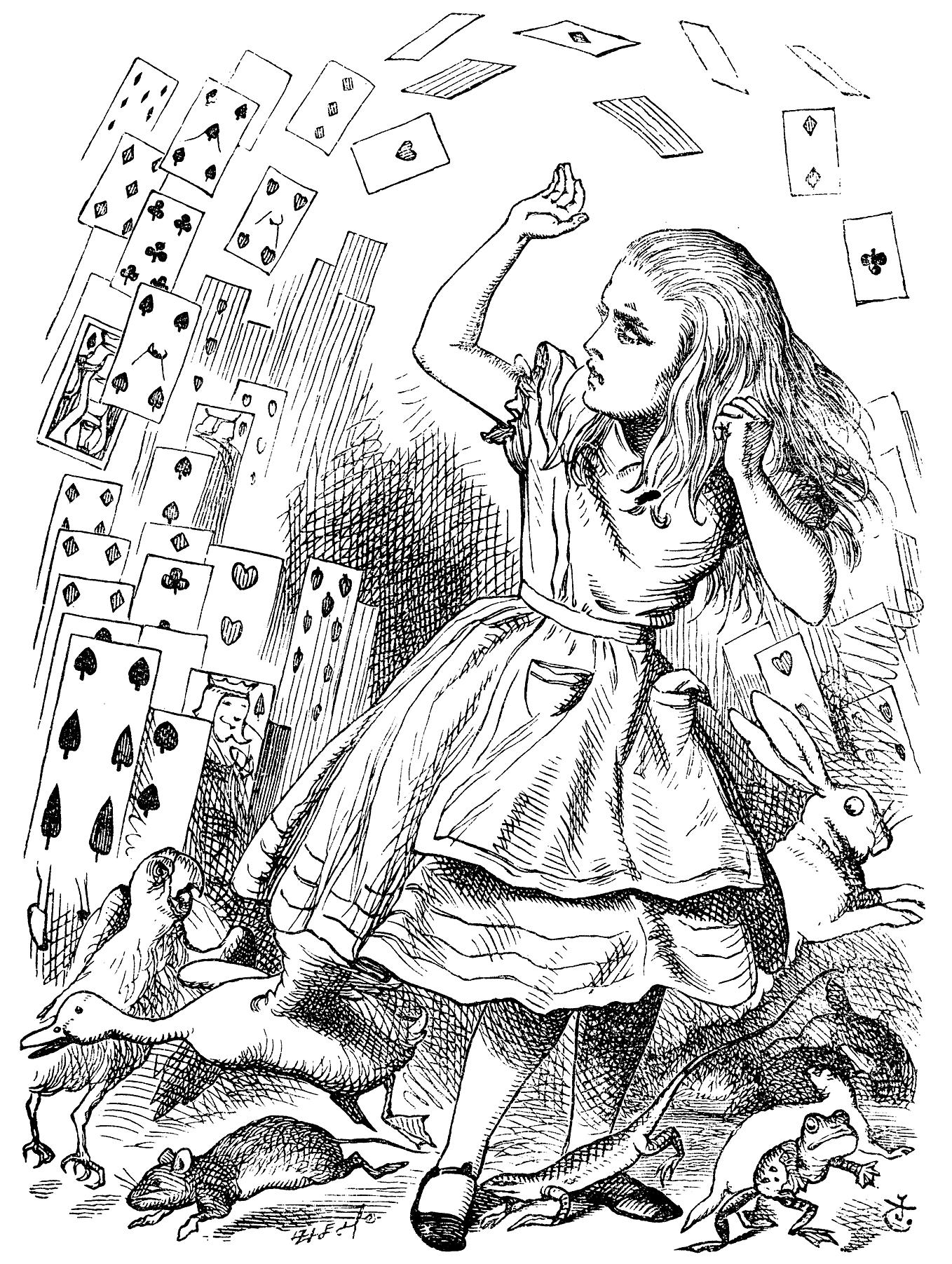
In Alice’s Adventures in Wonderland , young Alice falls asleep under a tree and dreams that she follows a White Rabbit down a rabbit hole where she has many peculiar adventures and encounters many strange and fantastical creatures. In this upside-down world, food and drink can make one change size, logic gets turned on its head, and animals are personified. In Wonderland, Alice encounters a hookah-smoking Caterpillar and the Cheshire Cat. She attends a never-ending tea party with the Mad Hatter and the March Hare and plays a game of croquet with a flamingo mallet and hedgehog balls and a Queen who wants to behead almost everyone. After the Gryphon takes Alice to meet the weeping Mock Turtle who has been educated in Ambition, Distraction, Uglification and Derision, she is called as a witness in the trial of the Knave of Hearts who has been accused of stealing the Queen’s tarts. When the Queen calls for Alice to be beheaded, she realizes that the characters are just a pack of cards and awakens from her dream.
In Through the Looking-Glass, Alice once again enters a strange world full of unusual creatures, this time through a mirror in her house. Similarly, to Wonderland, this world is full of unusual and illogical things: chess pieces come to life, nursery rhyme characters are real, and flowers can speak. This strange land is one large chess board and Alice must work her way across the board to be crowned Queen. Along the way she meets the Red Queen, the White Queen, insects that are part bug, part object (Rocking-horse-fly), Tweedledum and Tweedledee, Humpty Dumpty, a lion and a unicorn, the Red King, the White King, and a White Knight. She learns about the Jabberwocky, has a conversation with flowers, recites poetry, and slowly, but surely, advances across the chessboard to the eighth rank and is crowned Queen. In the end, Alice again awakens to find that her adventure was all a dream, but the final line—"Life, what is it but a dream?”— leaves the reader with a question to ponder.
chapters
Alice’s Adventures in Wonderland and Through the LookingGlass are both divided into 12 chapters.
Chapters in Alice’s Adventures in Wonderland:
• Down the Rabbit-Hole
• The Pool of Tears
• A Caucus-Race and a Long Tale
• The Rabbit sends in a Little Bill
• Advice from a Caterpillar
• Pig and Pepper
• A Mad Tea-Party
• The Queen’s Croquet-Ground
• The Mock Turtle’s Story
• The Lobster Quadrille
• Who Stole the Tarts?
• Alice’s Evidence
Chapters in Through the Looking-Glass:
• Looking-Glass House
• The Garden of Live Flowers
• Looking-Glass Insects
• Tweedledum and Tweedledee
• Wool and Water
• Humpty Dumpty
• The Lion and the Unicorn
• “It’s my own Invention”
• Queen Alice
• Shaking
• Waking
• Which dreamed it?
drawing the dreams
Sir John Tenniel was the illustrator for Alice's Adventures in Wonderland and Through the Looking-Glass when published in 1865 and 1871, respectively. Though author Lewis Carroll initially created his own illlustrations for the first book, it is Tenniel's signature style that is most associated with the Alice characters. Tenniel was born in England in 1820 and was a successful illustrator, graphic humorist and political cartoonist in the second half of the 19th century. He was knighted for his achievements in 1893, the first illustrator or cartoonist to receive this honor.

plot summary
characters
There are many characters in Alice’s Adventures in Wonderland and Through the Looking-Glass
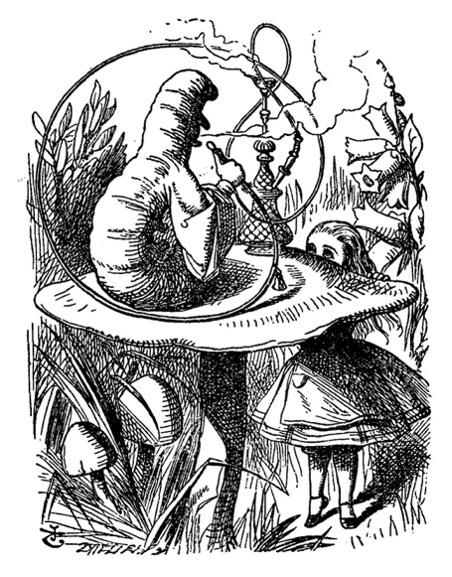
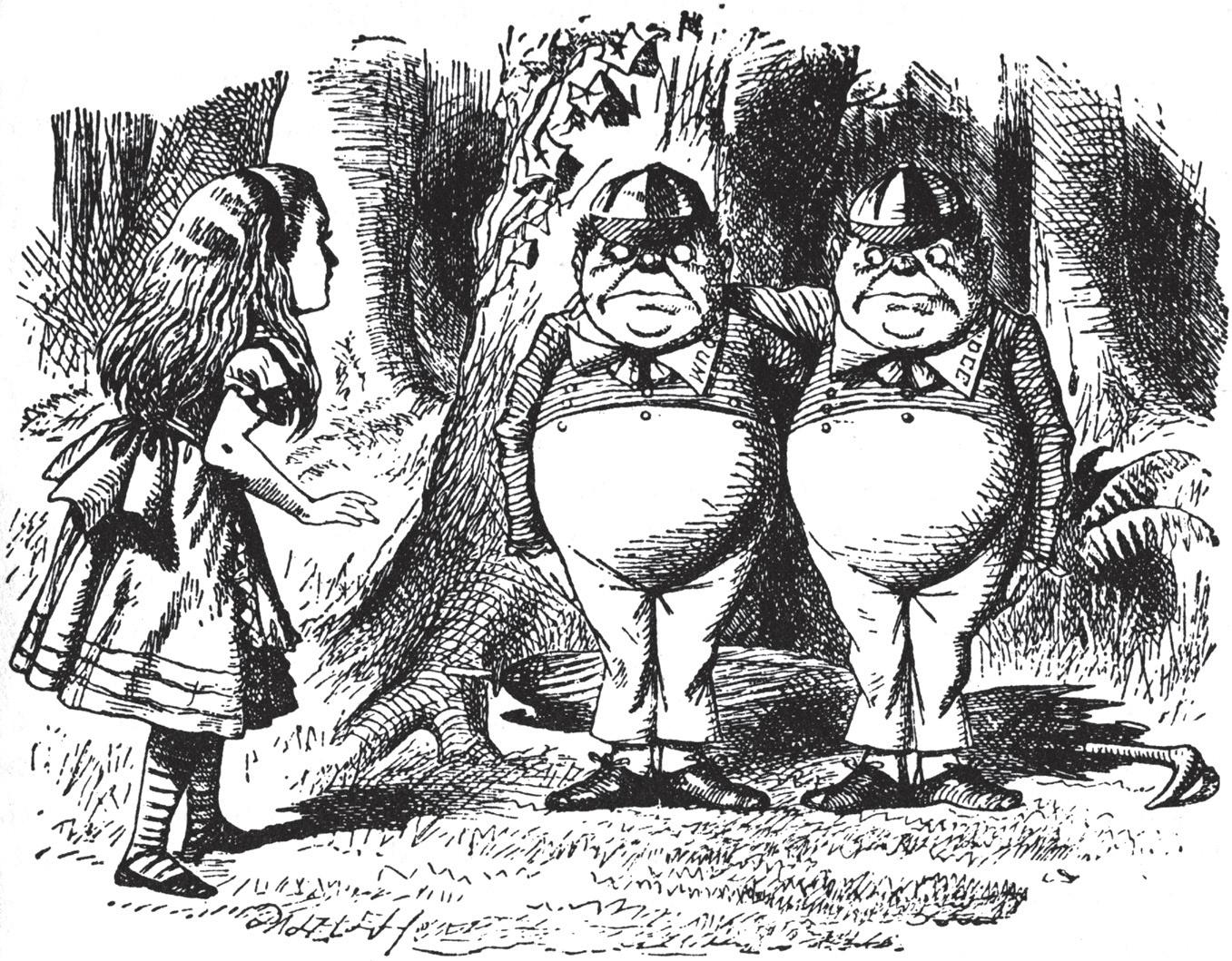

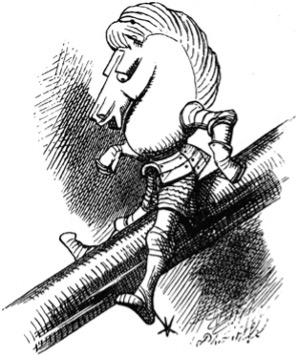
Characters from Alice’s Adventures in Wonderland:
• Alice
• The White Rabbit
• The Mouse
• The Dodo
• The Lory
• The Eaglet
• The Duck
• Pat
• Bill the Lizard
• The Caterpillar
• The Duchess
• The Cheshire Cat
• The Hatter
• The March Hare
• The Dormouse
• The Queen of Hearts
• The King of Hearts
• The Knave of Hearts
• The Gryphon
• The Mock Turtle
Additional characters from Through the Looking-Glass:
• The Red Queen
• The Red King
• The White Queen
• The White King
• The White Knight
• Tweedledee and Tweedledum
• Humpty Dumpty
• The Walrus and the Carpenter
• The Lion and the Unicorn
• The Tiger-lily
• The Rose
• The Violet
• The Daisies
• The Jabberwocky
poetry
Poetry is a form of literature that uses aesthetic and often rhythmic qualities of language—such as phonesthetics, sound symbolism and meter—to evoke meaning in addition to, or in place of, a prosaic ostensible meaning.
Poetry, or verse, plays an important role in Carroll's works and features prominently throughout Alice’s Adventures in Wonderland and Through the Looking-Glass. While some poems in the Alice books were original compositions written by Carroll, some verses were derivations or parodies of verses popular at the time. Carroll manipulated the words, often absurdly, to further illustrate the topsy-turvy worlds of Alice’s adventures.
Carroll’s poetry is considered “light poetry,” which is regarded as humorous poetry that can be on any subject matter. Light poetry often involves word play, puns, alliteration and adventurous rhymes.
Examples of poetry or verse found in Alice’s Adventures in Wonderland:
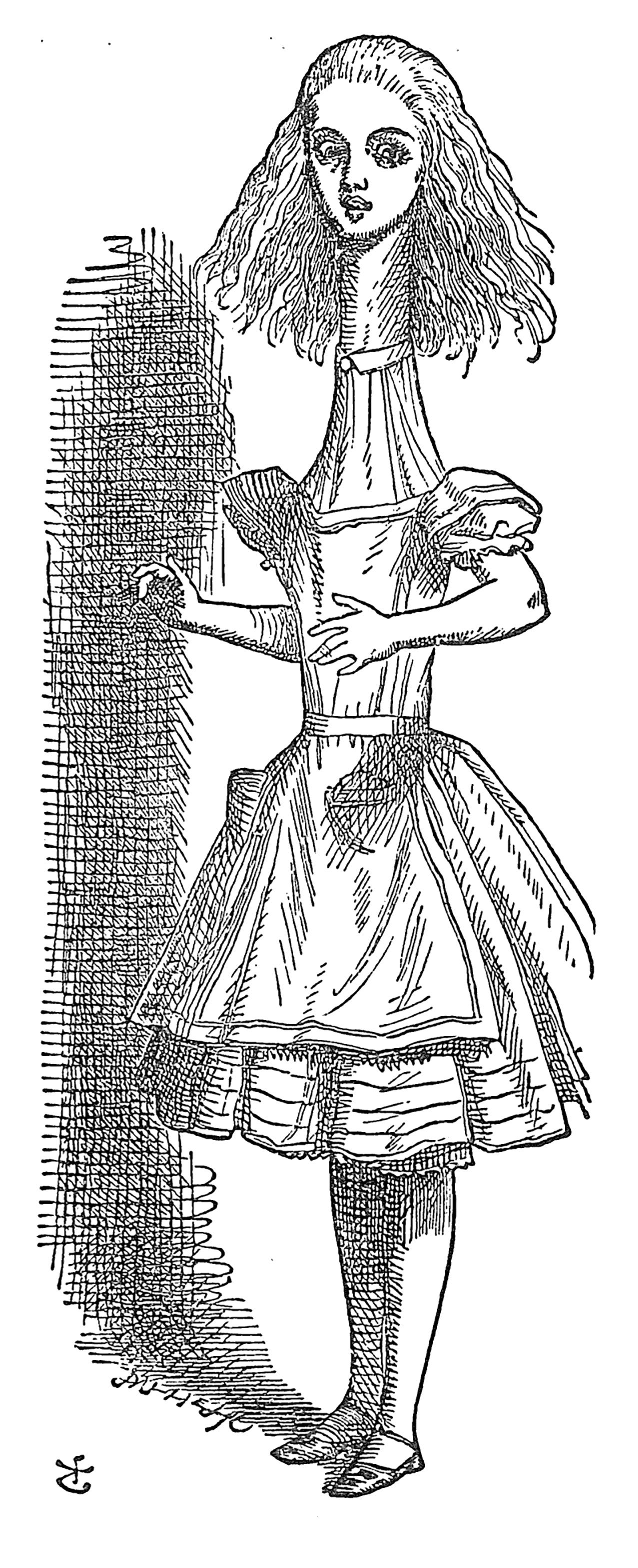
“All in a golden afternoon …”
“How Doth the Little Crocodile”
Parody of “Against Idleness and Mischief” (Isaac Watts)
“The Mouse’s Tale”
“You are Old, Father William”
Parody of “The Old Man’s Comforts and How He Gained Them” (Robert Southey)
“Speak roughly to your little boy”
Parody of “Speak Gently” (David Bates)
“Twinkle, Twinkle, Little Bat”
Parody of “Twinkle, Twinkle, Little Star”
“The Lobster Quadrille”
Parody “The Spider and the Fly” (Mary Botham Howitt)
“’Tis the Voice of the Lobster”
Parody of “The Sluggard” (Isaac Watts)
“Beautiful Soup”
Parody of “Star of the Evening, Beautiful Star” (James M. Sayles)
“The Queen of Hearts”
A nursery rhyme
Examples of poetry or verse found in Through the Looking-Glass:
“Child of the pure unclouded brow …”
“Tweedledum and Tweedledee”
English nursery rhyme
“The Walrus and the Carpenter”
“Humpty Dumpty”
English nursery rhyme
“In winter when the fields are white” Humpty Dumpty’s poem
“The Lion and the Unicorn”
A parody of an English nursery rhyme
“Haddocks’ Eyes”
The Red Queen’s lullaby “Hush-a-by lady, in Alice’s lap …” Parody of the nursery rhyme
“To the Looking-Glass world it was Alice that said …” Parody of “Bonnie Dundee” (Walter Scott)
The White Queen’s riddle
“A boat beneath a sunny sky”
From an acrostic poem using the name Alice Pleasance Liddell
what is a mome rath
Lewis Carroll is known as a master of nonsense verse, a whimsical form of poetry. While the overall structure, rhythm and rhyme of a nonsense poem may be well-formed, the words used within the poem often lack clear meaning or have no meaning at all. “Jabberwocky” ( the Looking-Glass, is a prime example of Carroll’s nonsense verse.
Jabberwocky
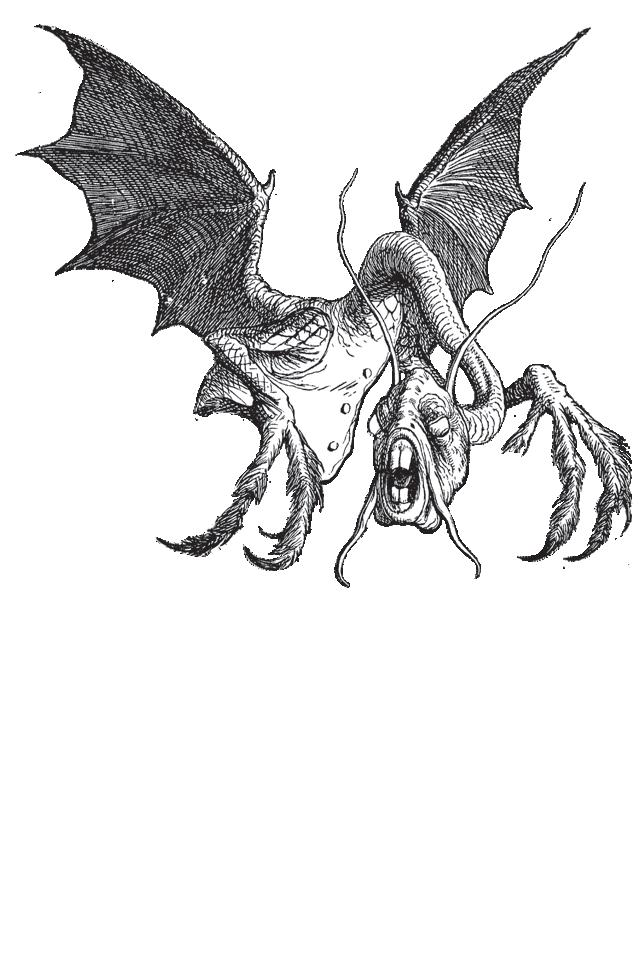
from Through the Looking-Glass
by Lewis Carroll
’ Twas brillig, and the slithy toves
Did gyre and gimble in the wabe: All mimsy were the borogoves, And the mome raths outgrabe.
“Beware the Jabberwock, my son! The jaws that bite, the claws that catch Beware the Jubjub bird, and shun The frumious Bandersnatch!”
He took his vorpal sword in hand; Long time the manxome foe he sought— So rested he by the Tumtum tree And stood awhile in thought.
And, as in uffish thought he stood, The Jabberwock, with eyes of flame Came whiffling through the tulgey wood, And burbled as it came!
One, two! One, two! And through and through The vorpal blade went snicker-snack! He left it dead, and with its head He went galumphing back.
“And hast thou slain the Jabberwock? Come to my arms, my beamish boy!
O frabjous day! Callooh! Callay!” He chortled in his joy.
’ Twas brillig, and the slithy toves
Did gyre and gimble in the wabe: All mimsy were the borogoves, And the mome raths outgrabe.

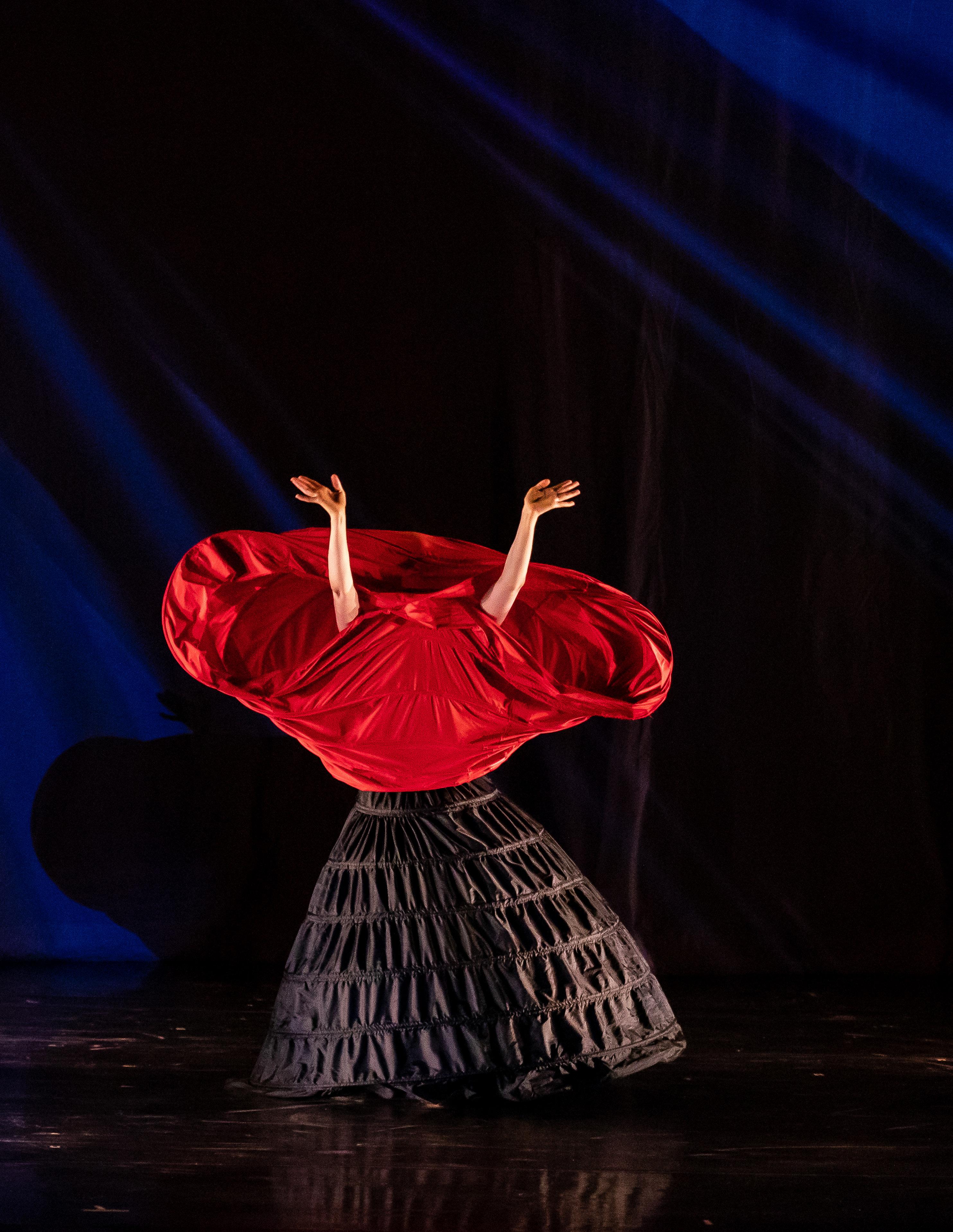
Dance vocabulary
Dance is a performing art in which the body is moved in a rhythmic way, most often to music. This action can be prescribed or improvised and is often used to express an emotion, idea or story. The category of dance is determined by its choreography, type of movement, or when and where it originated.
Theatrical dance is a type of performance presented to an audience. It may include a story, costumes, scenery and/or musical interpretation. Some examples of theatrical dance are ballet, modern and jazz.
Participatory dances are folk dances, social dances and group dances in which people participate, rather than watch. Some examples of participatory dance are line dancing, square dancing and partner dancing.
Here are a few additional vocabulary words that will assist students in conversations about the art of dance:
Accent
A way to give emphasis. In dance, a way to give emphasis to a particular movement.
Beat
The rhythmic pulse of the music and/or the movement.
Choreography
The process of creating movement sequences for dancers; it can also describe a specific dance work.
Choreographer
The person who creates the choreography.
Duration
The length of time something lasts. In dance, it is the length of time a movement lasts.
Levels
The height of the dancer in relation to the floor. A kneeling dancer would be low, a standing dancer would be mid-level and a leaping dancer would be high, for example.
Locomotor
A type of movement that travels from one place to another. Some common examples are walking, running, leaping, hopping, jumping, skipping, sliding and galloping.
Non-locomotor
A type of movement that is fixed in one place such as bending, twisting, turning and stretching.
Phrase
A short series of connected movements that have a sense of rhythmic completion.
Shape
The form created by the body’s position in space, such as open/closed, symmetrical/asymmetrical and angular/curved.
Tempo
The speed or the pulse of the music or the movement.
lesson
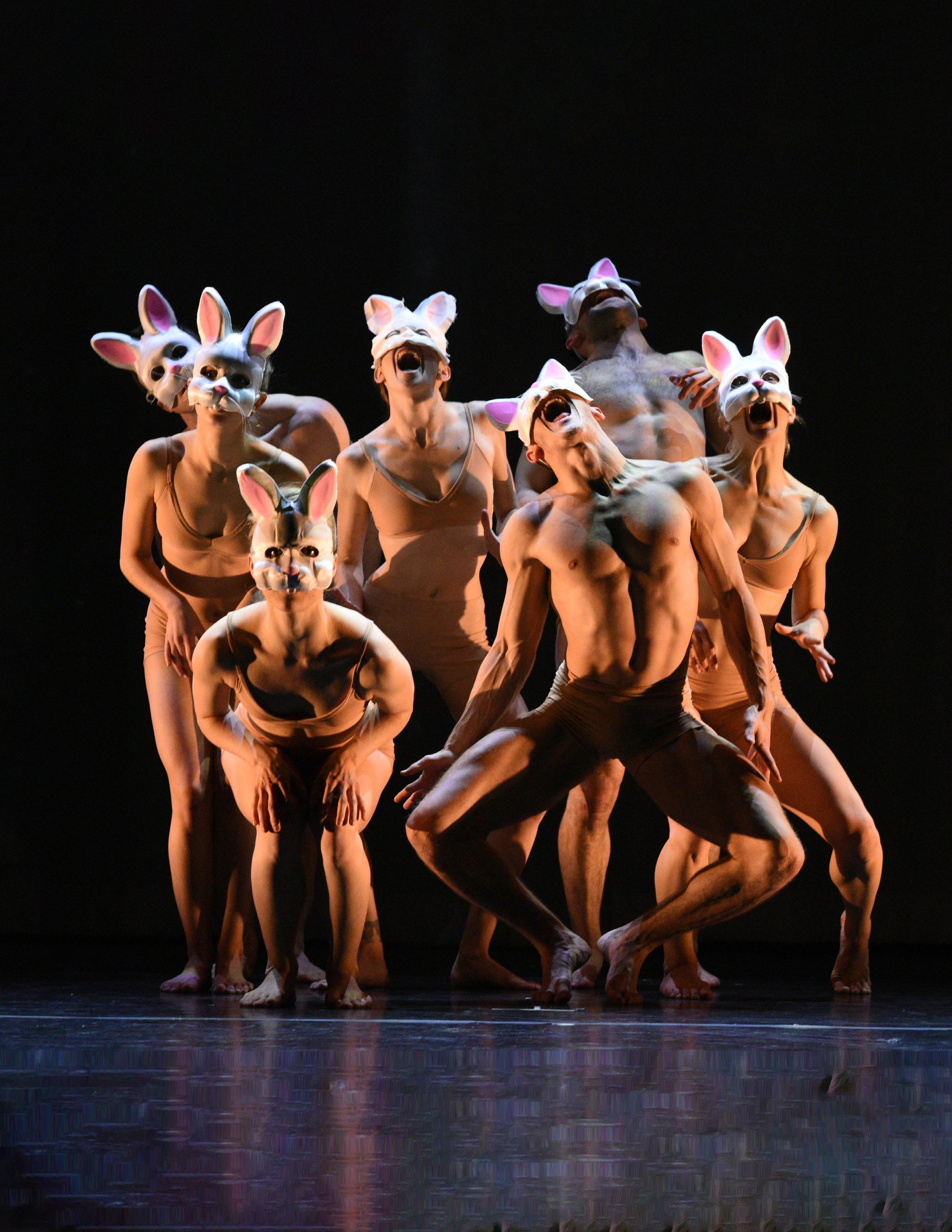
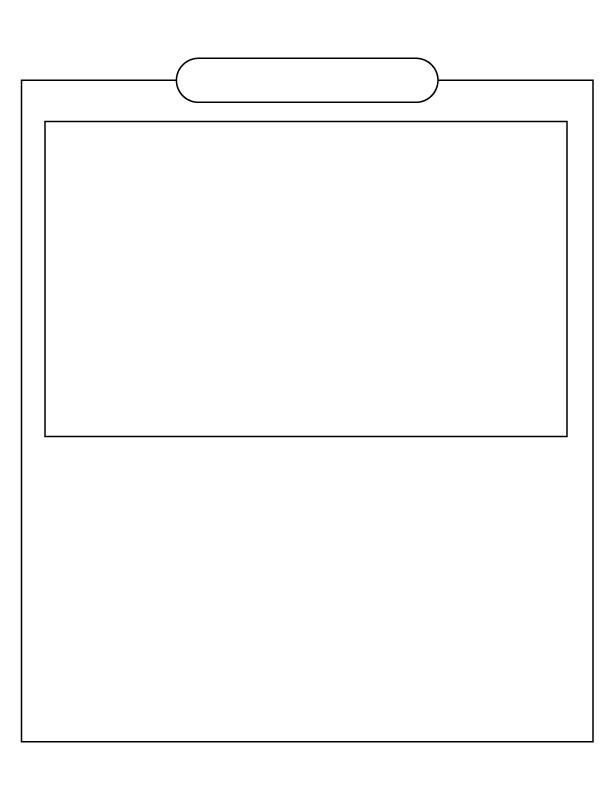



Name: _________________________________________________
Vocabulary Z C Q I X V S P H R A S E D P J Z A M K J R J C H O R E O G R A P H Y T N O N L O C O M O T O R R S N D U C U E T H E A T R I C A L U E H J M P I X O L I Y K V B F A R F G K A R Q K E P J X C H G B J A C C E N T P G H T D U R A T I O N J W Z Y G U B E J E R T L V T L E V E L S S N I E V K M X I L O C O M O T O R E P N A Z N P O P A R T I C I P A T O R Y T D J O I V U Y T U N I R D A N C E B V V Y M W E C L A P X S T Q H A Y C V Find the following words in the puzzle. Words are hidden and ACCENT BEAT CHOREOGRAPHY DANCE DURATION LEVELS LOCOMOTOR NONLOCOMOTOR PARTICIPATORY PHRASE SHAPE TEMPO THEATRICAL Created by Gogue Performing Arts Center using Word Search Generator on Super Teacher Worksheets (www.superteacherworksheets.com) Word Search (Intermediate) activity Dance vocabulary Created by the Gogue Performing Arts Center using Word Search Generator on Super Teacher Worksheets (superteacherworksheets.com).
Dance






Name:
Vocabulary D N P T N E C C A W N E G Q G S M S R Q J O U U S Q H T P J D K Q B K Z R K E C C K Q S V V R I S R U U A J B T H E A T R I C A L K W L C A M A O Y W O R Y T Y W L K E M S D G X T E W T H X T H B Q H T P J A S O S A K O O U S V B I N S O S O O E S I R C A R C L S A P I F E B O E B M T H J P H Q C A Z L J O L E M D Q L L N H W O E J W A H W B I X V Y G M K E T S S E F O A C E N G H R T G D P Z E Y V O T K G L U V Z A O S K J S F K N A I A C H B S T M V U B U F K L K E S A R H P O N I T C Z L N O O H P Z Z S N R N S C N E Y J R S O O N J U A R V B T U C O D B K O V X M T G K J T R Z J R Z O N U Q I N C K A T A E B V R V F L U Y S D P B K G I S V C Y C H O R E O G R A P H Y A L B N C Z P Q Y L S B Y E C N A D J W X W T K O S H C Find the following words in the puzzle. Words are hidden and ACCENT BEAT CHOREOGRAPHY DANCE DURATION LEVELS LOCOMOTOR NONLOCOMOTOR PARTICIPATORY PHRASE SHAPE TEMPO THEATRICAL Created by Gogue Performing Arts Center using Word Search Generator on Super Teacher Worksheets (www.superteacherworksheets.com) Word Search (Advanced) activity Dance vocabulary Created by the Gogue Performing Arts Center using Word Search Generator on Super Teacher Worksheets (superteacherworksheets.com).
_________________________________________________ Dance




Created by the Gogue Performing Arts Center using Word Search Generator on Super Teacher Worksheets (superteacherworksheets.com). Name: _________________________________________________
Z C Q I X V S P H R A S E D P J Z A M K J R J C H O R E O G R A P H Y T N O N L O C O M O T O R R S N D U C U E T H E A T R I C A L U E H J M P I X O L I Y K V B F A R F G K A R Q K E P J X C H G B J A C C E N T P G H T D U R A T I O N J W Z Y G U B E J E R T L V T L E V E L S S N I E V K M X I L O C O M O T O R E P N A Z N P O P A R T I C I P A T O R Y T D J O I V U Y T U N I R D A N C E B V V Y M W E C L A P X S T Q H A Y C V Find the following words in the puzzle. Words are hidden and ACCENT BEAT CHOREOGRAPHY DANCE DURATION LEVELS LOCOMOTOR NONLOCOMOTOR PARTICIPATORY PHRASE SHAPE TEMPO THEATRICAL Created by Gogue Performing Arts Center using Word Search Generator on Super Teacher Worksheets (www.superteacherworksheets.com) Word Search (Intermediate) activity
Solution
Dance Vocabulary
Dance vocabulary






Name:
Dance Vocabulary D N P T N E C C A W N E G Q G S M S R Q J O U U S Q H T P J D K Q B K Z R K E C C K Q S V V R I S R U U A J B T H E A T R I C A L K W L C A M A O Y W O R Y T Y W L K E M S D G X T E W T H X T H B Q H T P J A S O S A K O O U S V B I N S O S O O E S I R C A R C L S A P I F E B O E B M T H J P H Q C A Z L J O L E M D Q L L N H W O E J W A H W B I X V Y G M K E T S S E F O A C E N G H R T G D P Z E Y V O T K G L U V Z A O S K J S F K N A I A C H B S T M V U B U F K L K E S A R H P O N I T C Z L N O O H P Z Z S N R N S C N E Y J R S O O N J U A R V B T U C O D B K O V X M T G K J T R Z J R Z O N U Q I N C K A T A E B V R V F L U Y S D P B K G I S V C Y C H O R E O G R A P H Y A L B N C Z P Q Y L S B Y E C N A D J W X W T K O S H C Find the following words in the puzzle. Words are hidden and ACCENT BEAT CHOREOGRAPHY DANCE DURATION LEVELS LOCOMOTOR NONLOCOMOTOR PARTICIPATORY PHRASE SHAPE TEMPO THEATRICAL Created by Gogue Performing Arts Center using Word Search Generator on Super Teacher Worksheets (www.superteacherworksheets.com) Word Search (Advanced) Dance vocabulary activity Created by the Gogue Performing Arts Center using Word Search Generator on Super Teacher Worksheets (superteacherworksheets.com). Solution
_________________________________________________


The Five Elements of Dance
When learning something new, it is always a good idea to approach the subject from the ground up, learning the basics first to help you understand the bigger picture. A great way to start is by asking the familiar questions of who, what, when, where, why and how.
In this lesson, you and your students will identify and analyze the fundamental components of dance.
To better understand dance or, more specifically, the movement of a single dancer or performance, the initial question we might ask is:
Who does what, where, when and how?
The answer to this question is:
The dancer moves through space and time with energy.
To dig deeper and get even more specific, we can break down this question even further by examining the five elements of dance:
• body
• action
• space
• time
• energy
A popular acronym for remembering the five elements of dance is B.A.S.T.E.
The five elements of dance are typically intertwined within a performance and can sometimes be hard to separate from one another. However, it is important to understand each element individually to better interpret the art of dance.
body
Body refers to who moves. The dancer moves their body. This movement can be of body parts like the head, neck, arms, fingers, torso, legs, feet and the toes, or it can be of the whole body through creating shapes. Some shapes that the body can create through movement are curves, angles and lines. The dancer also uses their muscles, breath and balance among other body systems.
action
Action refers to what type of movement is being performed. This can be any movement in the act of dancing, including locomotor and non-locomotor movement. Locomotor movement is any movement that travels from one place to another while non-locomotor movement remains in place.
space
Space refers to where the dancer moves and includes the components of dance involving direction, levels, shapes and design. Space can also refer to the physical place the dancer occupies including all levels, planes and directions both near and far from the body’s center. Additionally, it can reference the dancer's focus, whether inward or outward.
time
Time refers to when the dancer moves. Time includes duration, tempo, beat and accent. Duration indicates how long or brief the movement is. The tempo is determined by how fast or slow the movement is. The beat can be steady or uneven and refers to the movement, not the music. Accents in the movement can happen singularly or multiple times. All these items can be dictated by the music, but do not have to be.
energy
Energy refers to how the dancer moves. Energy can describe the degree of muscular tension and energy used to move. For example, a movement can be heavy or light, sharp or smooth, tense or relaxed. Energy can also refer to the quality of the dance, whether it is aggressive, timid, wild or languid.
lesson
The Elements of Dance
Ask Who? Does what? Where? When? How?
Answer The dancer moves through space and time with energy
b.a.s.t.e. body action space time energy Body
Part(s) Head Neck Shoulders Arms Hands Fingers Legs Feet Toes Locomotor Walk Run Skip Crawl Roll Leap Slide Hop Traveling turn Jump Direction Forward Backward Upward Downward Sideways Diagonally Linear Rotating Duration Brief Long Tension Tight Loose Body Shape(s) Rounded Twisted Angular Linear Non-locomotor Bending Non-traveling Turn (pirouette) Stretching Twisting Level High Mid Low Tempo Fast Slow Attack Sharp Smooth Sudden Sustained Body System(s) Muscles Bones Breath Balance Reflexes Focus Inward Outward Beat Steady Uneven Force Strong Gentle Accent Single Multiple Weight Heavy Light Flow Bound Free Quality(s) Vigorous Languid Furious Melting Light Wild Proud Sudden Sustained Smooth Timid Sharp
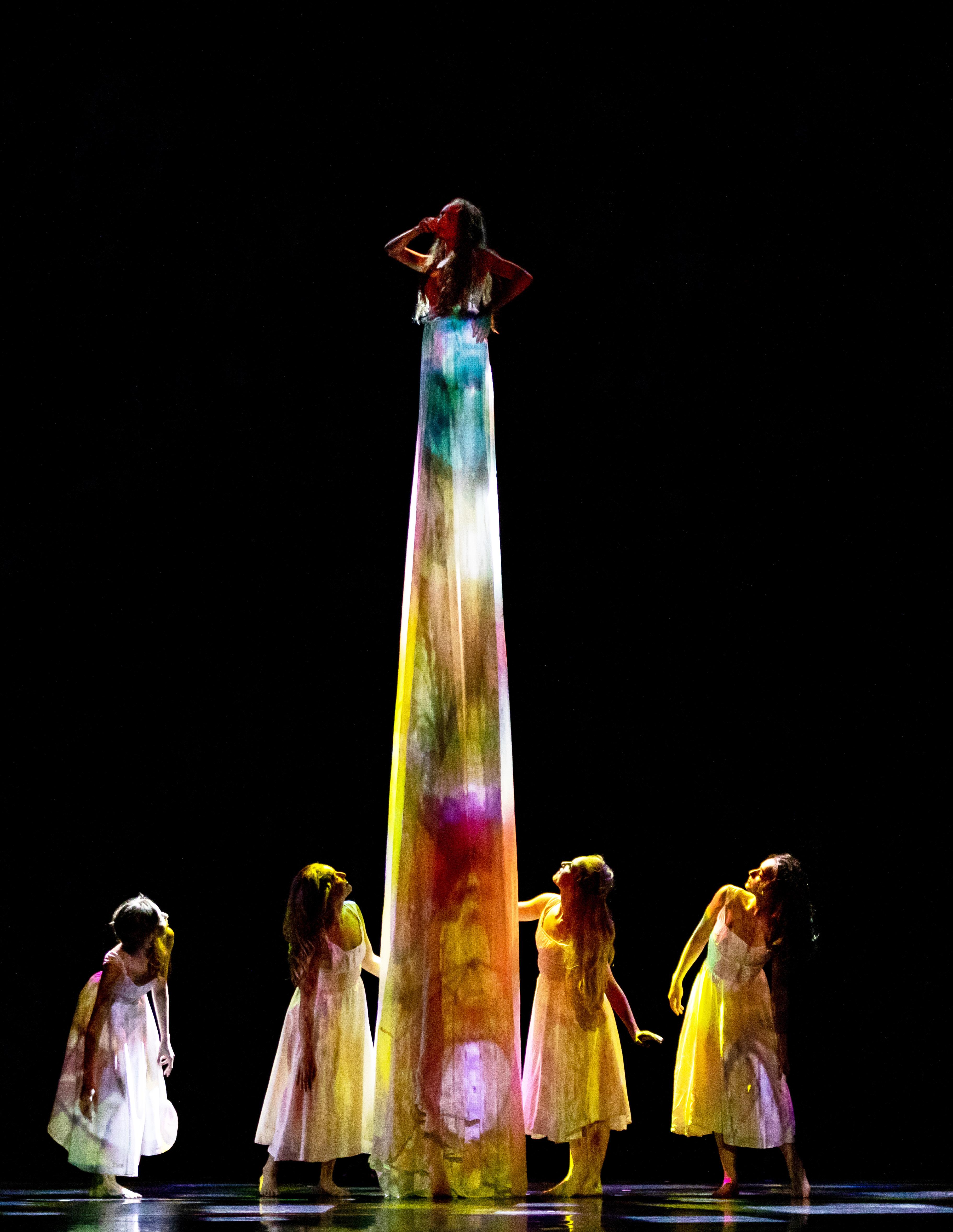
Identifying the elements of dance
After reviewing the elements of dance, your students should be able to successfully identify and discuss the five elements (body, action, space, time and energy) as exhibited in different dance performances.
For this activity, have your students—together as a class or individually—select two dance videos from the provided options (right).


While watching the first selected video, ask students to carefully evaluate the performance using language from the elements of dance chart.
Being as specific as possible, discuss the following:
• The different parts of the body used (body )
• Ways in which the featured dancer(s) moves (action )
• The movement each part of the body creates (action )
• The directions, levels and focus of the different movements (space )
• Examine the duration, tempo, beat and accents (time ) used by the dancer and what type of energy required.
Repeat the exercise with the second selected video. Now, compare and contrast the two performances.
• What similarities can be found? What differences?
dance 1
Giselle, The Royal Ballet, Opus Arte Ballet; 2:25

aub.ie/giselle-video
dance 2
“Glory,” Syncopated Ladies Tap dance; 4:18

aub.ie/syncopated-video
dance 3
“Sweet Dreams,” Brooke Henderson Dance Studios Jazz dance; 4:30
aub.ie/dreams-video
dance 4
“flowers in the rain,” Koresh Dance Company Modern; 5:59
aub.ie/flowers-video
dance 5
“Easy on Me,” Jonah Almanzar & Bailey Vogel Lyrical; 2:10
aub.ie/easy-video
activity
Experiencing the elements of dance
After reviewing the elements of dance, facilitate a time for experimentation with movement so that your students can experience (and better understand) the elements using their own bodies.
Students can begin this exercise at their desk or a designated personal space and, with consent, progressively occupy additional shared spaces within the classroom.
Lead your students with the following prompts:
prompt 1
In your personal space (the space available directly around you), make the shape of a circle with your arms.
• Make the circle as big as you can. Make the circle as small as you can.
• Can you take the circle above you, behind you and to the side of your body?
• Starting from a neutral position (just casually standing), can you make a circle as slow as you can? How about as fast as you can?
• Can you name the elements of dance you used?
space: Size of circle action: Direction—above, in front of, behind and to the side of your body time: Tempo—making the circle as slowly and quickly as possible
prompt 2
In a general space (the space available throughout the entire classroom), walk a straight path, being careful not to bump into your classmates.
• Notice where you are walking; stop and change direction. Repeat this action as much as you like.
• Stop, make a shape and freeze.
• Slowly melt into a different shape, facing a new direction as you morph from one shape to another.
• Skip a zig-zag pathway; go backwards; slide on a sideways pathway.
• Moving toward the ground, freeze in a shape.
• Now, in eight counts, move into a new shape slightly above the ground (knee- or hip-level).
• Finally, in four counts, move sharply into a new shape as far from the ground as you can.
• Can you name the elements of dance you used?
space: G eneral space; Direction—skipping forward and backward, walking straight pathway, changing direction; Level—making shapes on the low, middle and high level time: Tempo—moving in eight counts and four counts energy: Quality changing shape in a sharp way
prompt 3
In your personal or a general space, begin in a low shape near the ground.
• Using your choice of energy and tempo, move from your low-level shape to a high-level shape in 12 counts; immediately return from your high-level shape to a lowlevel shape in 12 counts.
• Perform the same action again. This time, however, move from a low-level shape to a high-level shape using eight counts—eight counts up, eight counts down.
• Repeat the same action. This time, move from a lowlevel shape to a high-level shape using four counts—four counts up, four counts down.
• Now try the same action using only two counts—two counts up, two counts down.
• Finally, repeat the action using one count—one count up, one count down. (This action should look like jumping since it's so fast!)
• Can you name the elements of dance that you used?
space: Level—high, medium, low; Direction—upward, downward time: Tempo—fast, slow energy: moving in different ways from low-level to high-level shapes
movement activity
First impressions On the page or on the stage?
Following the performance, invite your students to recall their first impressions of MOMIX'S Alice.
Pose the following questions to your students:
• How did the performance begin?
• What were some of your first impressions or feelings at the beginning of the performance?
• What did you notice most as the performance continued?
• Did you have a favorite dancer? Which one and why?
• Did you notice aspects other than the dancers’ movements, such as costumes, scenery, music or lighting?
• What other elements of the performance stood out to you most?
Following the performance, invite your students to explore and discuss the differences between Lewis Carroll’s books and MOMIX’s adaptation.
Pose the following questions to your students:
• After studying the story of Alice’s Adventures in Wonderland and Through the Looking-Glass, learning the names of the chapters, characters and poems, and seeing some of the original illustrations, what and who did you recognize in the MOMIX performance?
• What differences did you notice between the original books and the adaptation?
Use a Venn diagram similar to the one below to capture your students’ responses.
Books Performance activity activity
The Elements of Dance in Alice
Having experienced MOMIX'S adaptation of Alice in person, and after reviewing the elements of dance, your students should be able to successfully identify and discuss the five elements (body, action, space, time and energy) as exhibited in the live performance.
Referring to "The Elements of Dance" chart as needed, pose these elements-related questions (right) to your students.
body
Remember to consider these body-related items: Body Part(s) • Body Shape(s) • Body System(s)
• What did you notice most about the way the dancers moved their bodies?
• What parts of their bodies did the dancers use? Did they use some parts more than others?
• Did the dancers enter and exit the stage together or at different times?
• Did the dancers ever do the same movements at the same time (move in unison)? When?
• Did the dancers perform close together, far apart or both? Did the dancers touch (e.g., link arms or hands, or swing or lift one another)?
action
Remember to consider these action-related items: Locomotor Movement • Non-locomotor Movement
• What do you remember most about the dancers' movements?
• What locomotor movements did you see in the dance?
• What non-locomotor movements did you see?
• How did the dance combine locomotor and nonlocomotor movements?
• Did the movements seem to go with the music? Why or why not?
• Did the movements remind you of other kinds of movements you have seen? How were the movements similar to or different from the way we move our bodies in everyday life or sports movements?
activity
space
Remember to consider these space-related items: Direction • Level • Focus
• What did you notice most about the use of space in the dance?
• What levels were used in the dance? Did the dancers change levels? Were there many lifts?
• What shapes did the bodies of the dancers make (individually and/or as a group)? Were the shapes symmetrical or asymmetrical?
• What floor patterns did the dancers make as they traveled through space? What pathways did they take? In what directions did they move?
• Did the use of space help make the dance interesting or convey an idea or feeling? How?
• Where were your eyes drawn when you watched the dance? Why? On what did the dancers focus (e.g., looking in the direction of the movement, changing focus as they moved)?
energy
Remember to consider these energy-related items: Tension
• Attack
• Force
• Weight
• Flow
• Quality(s)
• What words would you use to describe the energy of the dancers and the dance (e.g., heavy, light, sharp, smooth, tense, relaxed, flowing, etc.)?
• Did the energy used stay the same throughout the dance or did it change? If it changed, when and how did it change?
• Did different dancers use different energies?
• Was the energy of the movement similar to or different from the energy of the music? Explain.
• Did the energy or force help make the dance interesting or convey an idea or feeling? How? What do you remember most about the movements of the dancers?
time
Remember to consider these time-related items: Duration • Tempo • Beat • Accent
• What did you notice most about the use of time in the dance?
• Was the dancing fast, slow or medium? Did the tempo change or stay the same during the dance?
• What rhythms did you notice?
• Was the tempo of the movement always the same as the tempo of the music? If not, how did they differ?
• Did the use of tempo and rhythm help make the dance interesting or help convey an idea of feeling? How?
activity / movement activity
Reflecting on Alice
Following the performance, invite your students to further reflect on the elements of dance as seen in Alice.
Referring to "The Elements of Dance" chart as needed, ask your students to answer the following questions with written responses:
• What did you see in the performance?
• What shapes did you see in the performance?
• How did the dancers use the elements of dance in the performance?
• Did being familiar with the elements of dance impact your viewing of the performance? How? (For example, did the use of tempo make you experience the mood differently?)
• Did the use of shape, size and how the dancers moved and interacted on the stage make you experience the story in a new or unexpected way?
• What surprised you as you watched the performance?
Now, using the observations written in response to the questions above, ask your students to write a sentence describing a specific moment during the performance.
Students should be specific and descriptive with their sentence. Ask them to include as many elements of dance— body, action, space, time and energy—as possible.
When your students are finished writing, ask them to partner with a classmate and read their sentences to each other. Taking turns, have the students create the shapes and/or movements described in their partner's sentence.
While your students are still partnered, ask them to experiment with their Alice movement phrase by incorporating different elements of dance. How does the phrase change by adjusting or completely changing the elements?
body (big or small shapes)
action (walking, running, skipping, stretching)
space (forward or backward direction; low or high level)
time (slow or fast tempo; steady or uneven beat)
energy (sharp or smooth attack; tight or loose tension)
Invite your students to perform one or more of their Alice phrases to the class and ask their peers to identify the various elements of dance.
Ask your students:
• What do you see in the Alice phrase?
• Do the shapes make you think of words that describe what you saw in Alice?
• Did this performance get you to think differently about the story of Alice's Adventures in Wonderland? How?
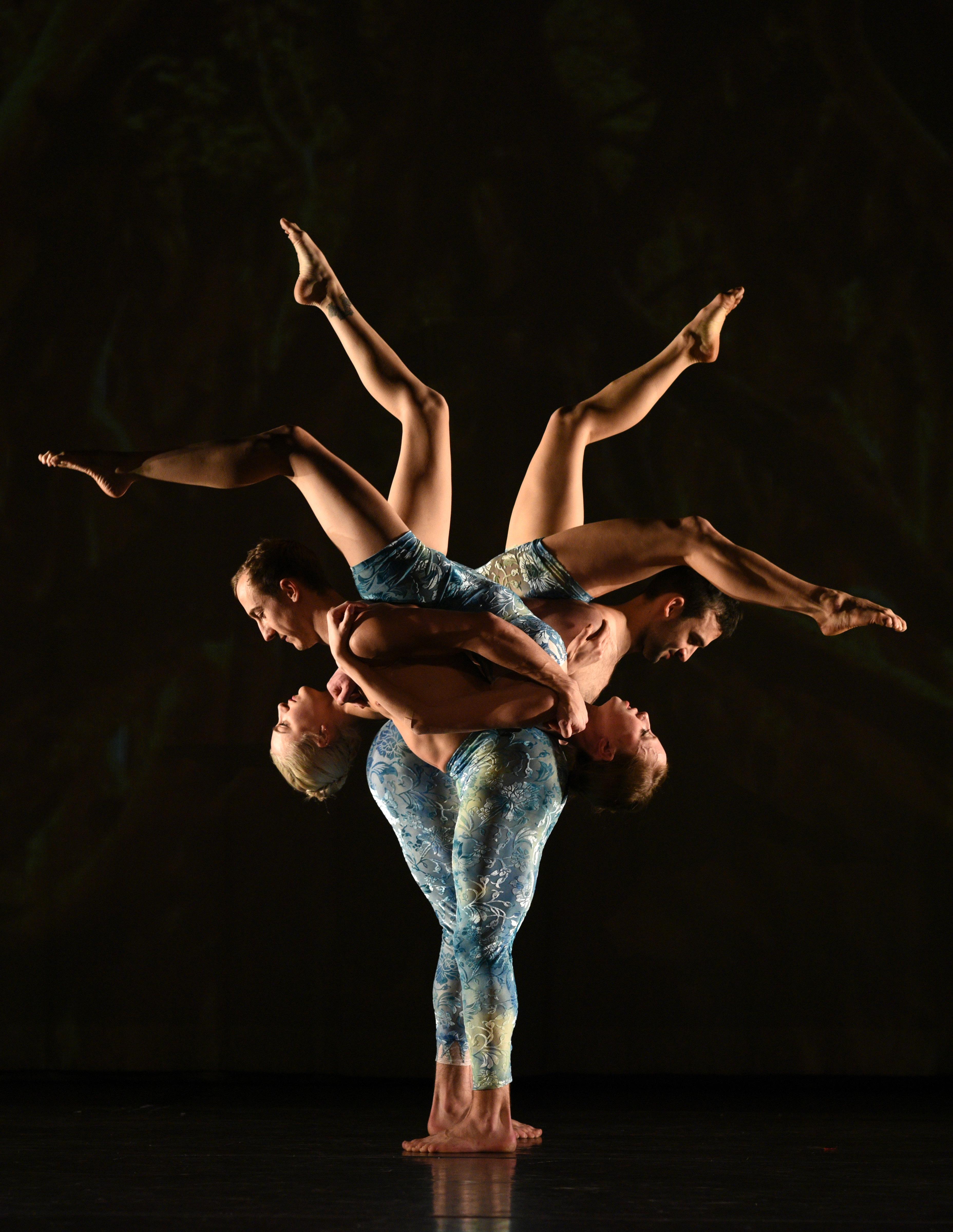

Sources
MOMIX
momix.com
Alice
momix.com/portfolio-view/alice
Alice’s Adventures in Wonderland and Through the Looking-Glass
Carroll, Lewis. (1865/1871) Alice's Adventures in Wonderland and Through the Looking-Glass. Reprint, New York: The Heritage Press, 1941.
alice-in-wonderland.net
britannica.com/topic/Alices-Adventures-in-Wonderland
britannica.com/biography/Lewis-Carroll
The Five Elements of Dance
kennedy-center.org/education/resources-for-educators/ classroom-resources/lessons-and-activities/lessons/6-8/ elements-of-dance
kennedy-center.org/education/resources-for-educators/ classroom-resources/media-and-interactives/media/dance/doyou-wanna-dance
portal.ct.gov/-/media/SDE/Arts/Guide-to-K12-ProgramDevelopment-in-the-Arts/Dance-Glossary.pdf
elementsofdance.org
Dance vocabulary
education.ket.org/resources/dance-glossary
superteacherworksheets.com
Alice performance photography by Sharen Bradford. Courtesy of MOMIX.
Alice's Adventures in Wonderland and Through the Looking-Glass illustrations by Sir John Tenniel.
 Debbie & Dick Gooley
Artist's Entire Engagement Sponsor
Debbie & Dick Gooley
Artist's Entire Engagement Sponsor

















 Moses Pendleton
Derek Elliott Jr.
Sean Langford
Cynthia Quinn
Heather Conn
Nathaniel Davis
Seah Hagan
Aurelie Garcia
Elise Pacicco
Moses Pendleton
Derek Elliott Jr.
Sean Langford
Cynthia Quinn
Heather Conn
Nathaniel Davis
Seah Hagan
Aurelie Garcia
Elise Pacicco

























 Debbie & Dick Gooley
Artist's Entire Engagement Sponsor
Debbie & Dick Gooley
Artist's Entire Engagement Sponsor